Renault Espace vs Porsche Taycan – Differences & prices compared
Compare performance, boot space, consumption and price in one view.
Find out now: which car is the better choice for you – Renault Espace or Porsche Taycan?
The Renault Espace (SUV) comes with a Full Hybrid engine and Automatic transmission. In comparison, the Porsche Taycan (Coupe) features a Electric engine with Automatic transmission.
When it comes to boot capacity, the Renault Espace offers 692 L, while the Porsche Taycan provides 407 L – depending on how much space you need. If you’re looking for more power, decide whether the 200 HP of the Renault Espace or the 1034 HP of the Porsche Taycan suits your needs better.
In terms of consumption, the values are 4.90 L per 100 km for the Renault Espace, and 16.70 kWh for the Porsche Taycan.
Price-wise, the Renault Espace starts at 37500 £, while the Porsche Taycan is available from 87900 £. Compare all the details and find out which model fits your lifestyle best!
Renault Espace
The Renault Espace is a testament to innovative design, combining versatility with comfort to offer a unique driving experience. Its sleek exterior is complemented by a spacious interior, designed to cater to the needs of families and adventurers alike. With advanced technology and a focus on safety, the Espace seamlessly blends practicality with modern sophistication, making it a standout choice in the MPV segment.
details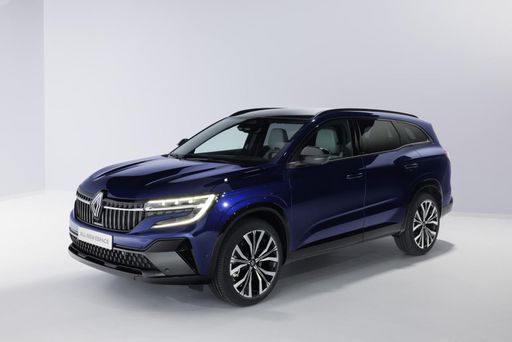 @ Renault
@ Renault
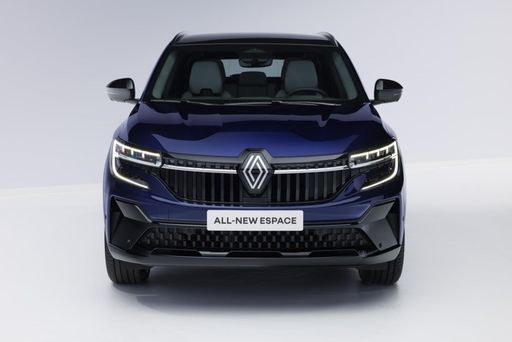 @ Renault
@ Renault
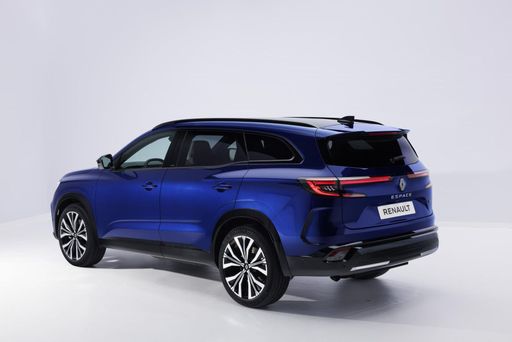 @ Renault
@ Renault
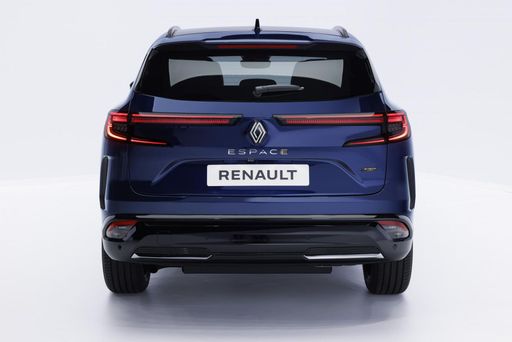 @ Renault
@ Renault
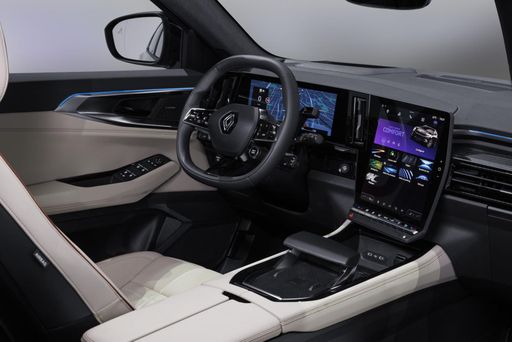 @ Renault
@ Renault
Porsche Taycan
The Porsche Taycan redefines the electric vehicle landscape with its stunning design and thrilling performance. With its smooth lines and athletic stance, this four-door sports car captures attention while delivering an exhilarating driving experience. Inside, the Taycan boasts a luxurious and high-tech interior, seamlessly blending comfort and cutting-edge innovation.
details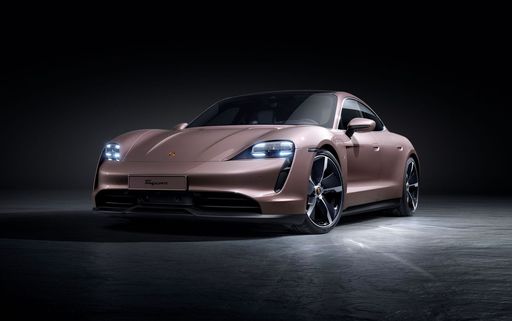 @ Porsche
@ Porsche
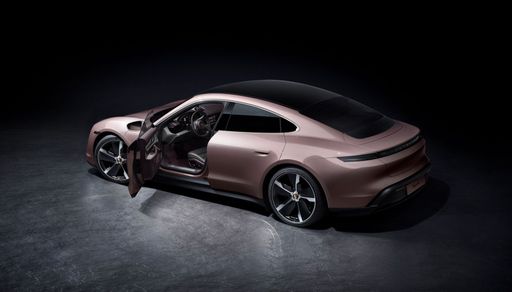 @ Porsche
@ Porsche
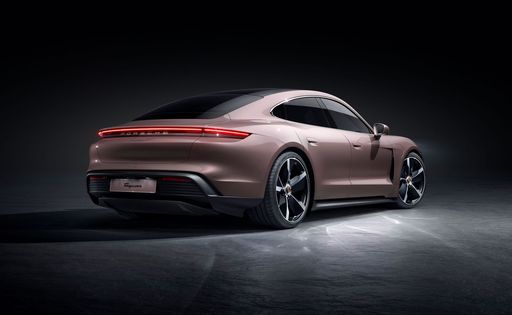 @ Porsche
@ Porsche
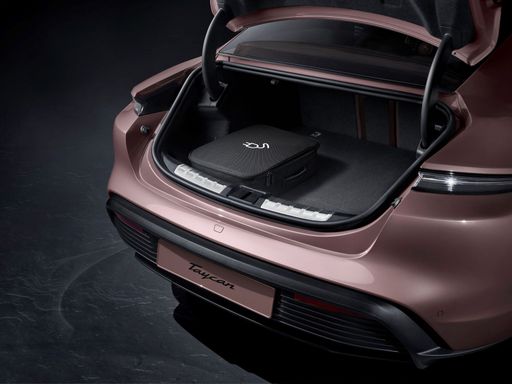 @ Porsche
@ Porsche
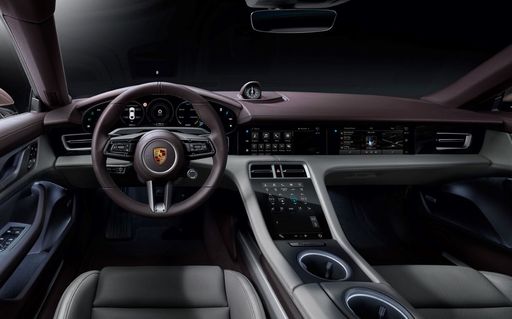 @ Porsche
@ Porsche

|

|
|
|
|
Costs and Consumption |
|
|---|---|
|
Price
37500 - 41400 £
|
Price
87900 - 206700 £
|
|
Consumption L/100km
4.90 L
|
Consumption L/100km
-
|
|
Consumption kWh/100km
-
|
Consumption kWh/100km
16.7 - 20.7 kWh
|
|
Electric Range
-
|
Electric Range
552 - 680 km
|
|
Battery Capacity
-
|
Battery Capacity
82.3 - 97 kWh
|
|
co2
110 g/km
|
co2
0 g/km
|
|
Fuel tank capacity
55 L
|
Fuel tank capacity
-
|
Dimensions and Body |
|
|---|---|
|
Body Type
SUV
|
Body Type
Coupe
|
|
Seats
5 - 7
|
Seats
4
|
|
Doors
5
|
Doors
4
|
|
Curb weight
1673 - 1783 kg
|
Curb weight
2165 - 2370 kg
|
|
Trunk capacity
212 - 692 L
|
Trunk capacity
326 - 407 L
|
|
Length
4746 mm
|
Length
4962 - 4968 mm
|
|
Width
1830 mm
|
Width
1966 - 1998 mm
|
|
Height
1645 mm
|
Height
1378 - 1381 mm
|
|
Payload
404 - 581 kg
|
Payload
175 - 635 kg
|
Engine and Performance |
|
|---|---|
|
Engine Type
Full Hybrid
|
Engine Type
Electric
|
|
Transmission
Automatic
|
Transmission
Automatic
|
|
Transmission Detail
Automatic Gearbox
|
Transmission Detail
Reduction Gearbox
|
|
Drive Type
Front-Wheel Drive
|
Drive Type
Rear-Wheel Drive, All-Wheel Drive
|
|
Power HP
200 HP
|
Power HP
408 - 1034 HP
|
|
Acceleration 0-100km/h
8.80 s
|
Acceleration 0-100km/h
2.2 - 4.8 s
|
|
Max Speed
174 km/h
|
Max Speed
230 - 305 km/h
|
|
Torque
-
|
Torque
410 - 1340 Nm
|
|
Number of Cylinders
3
|
Number of Cylinders
-
|
|
Power kW
147 kW
|
Power kW
300 - 760 kW
|
|
Engine capacity
1199 cm3
|
Engine capacity
-
|
General |
|
|---|---|
|
Model Year
2025
|
Model Year
2024 - 2025
|
|
CO2 Efficiency Class
C
|
CO2 Efficiency Class
A
|
|
Brand
Renault
|
Brand
Porsche
|
Renault Espace
A New Era for the Renault Espace
The Renault Espace, a staple in the automotive industry, has evolved to embrace a bold new direction with its latest iteration. With its transition into a sleek and stylish SUV, the Espace continues to offer the versatility and innovation that customers expect from the renowned French automaker. This article delves into the advanced technical details and groundbreaking innovations of the current Renault Espace model.
Powertrain Engineering: Full Hybrid Brilliance
The core of the latest Renault Espace is its sophisticated E-Tech Full Hybrid technology. At the heart of this system lies a dynamic three-cylinder engine paired with electric motor support, generating a robust 200 PS. This ensures that drivers experience both power and efficiency in their journeys. The hybrid engine achieves remarkable fuel economy, consuming just 4.7 L/100km, and demonstrates Renault’s commitment to environmental responsibility with a CO2 output of just 107 g/km, earning it a classification of CO2 efficiency class C.
Design and Dimensions: Spacious Comfort in an SUV Shell
Renault’s transformation of the Espace into an SUV doesn’t compromise on its title hinting towards ample interior space. With seating configurations for either five or seven passengers, the Espace adapts to diverse family needs. The SUV's dimensions—4,722 mm in length, 1,843 mm in width, and 1,645 mm in height—ensure that it stands out both aesthetically and functionally on the road.
The generous boot capacity ranges from 159 to 581 litres, allowing it to accommodate everything from daily groceries to larger travel luggage with ease. The five-door design further enhances its practicality, making the loading and unloading process a breeze.
Performance and Drivability: A Smooth Journey
The Renault Espace offers impressive performance metrics, accelerating from 0-100 km/h in a commendable 8.8 seconds. Despite its size, the Espace maintains a commendable top speed of 174 km/h, ensuring that it is as capable on highways as it is in an urban environment. The front-wheel drive system, paired with an automatic gearbox, provides a seamless driving experience—ideal for both city commutes and longer road trips.
Interior Comfort and Technology: A Hub of Innovation
Renault’s focus on creating a comfortable and technologically advanced cabin is evident in the Espace. The choice of various trims—Esprit Alpine Multi-Mode Automatik and Iconic Multi-Mode Automatik—offers luxury and personalisation. Modern technology is integrated throughout the vehicle, with intuitive infotainment options that keep all passengers connected and entertained.
Value for Money: A Competitive Edge
The Renault Espace positions itself competitively in the market with its starting price range from €43,800 to €48,300. Such pricing reflects its status as a premium vehicle that offers cutting-edge hybrid technology, elegant design, and versatile functionality.
With its blend of performance, technology, and space, the Renault Espace remains an outstanding option for families and individuals alike, looking to embrace innovative motoring in the SUV segment.
Porsche Taycan
Unveiling the Porsche Taycan: A Leap into the Future
The Porsche Taycan has established itself as a pioneering force in the realm of electric vehicles, merging luxury with performance in a way few others can boast. With stunning aesthetics and groundbreaking technologies, the Taycan stands as a testament to Porsche's commitment to innovation in the automotive world.
Power and Performance: A New Era for Electric Driving
At the heart of the Taycan's allure lies its remarkable performance figures. The model is available in several configurations, with power ranging from 408 HP in the entry-level variant to an astonishing 1,034 HP in the Turbo GT edition. This kind of power translates directly into exhilarating acceleration, with the Taycan Turbo GT achieving 0-100 km/h in just 2.2 seconds. Even the more modestly powered variants offer thrilling performance while managing to retain daily usability.
The Taycan's drive system includes options for both rear-wheel drive and all-wheel drive, providing flexibility based on driver preference. This versatile drivetrain couples impeccably with Porsche's advanced electric motors, ensuring optimal performance under various conditions.
Battery Technology and Range: Where Engineering Meets Efficiency
The Taycan ships with sophisticated battery technology that caters to both performance and practicality, with capacities ranging from 82.3 kWh to 97 kWh. The Performance Battery Plus variant extends the electric range to an impressive 680 km, while even the more potent Turbo and Turbo S models manage to offer about 634 km of range, ensuring that drivers can enjoy spirited drives without the constant worry of recharging.
Moreover, the efficiency of the Taycan is notable, with consumption figures around 16.7 to 20.6 kWh per 100 km. This blend of efficiency and power redefines how one perceives electric mobility.
Charging Innovations: Powering Up Fast
Charging innovations further enhance the Taycan’s appeal. With a maximum charging capacity of 270 kW, the Taycan can achieve an 80% charge in just about 22.5 minutes under optimal conditions. This means less time tethered to a charging station and more time enjoying the open road.
Cutting-edge Technology: A Driver’s Digital Playground
Inside, the Taycan is equipped with cutting-edge technology that ensures both driver engagement and comfort. The dual-screen cockpit integrates a 10.9-inch infotainment display alongside a 10.9-inch passenger display, offering intuitive access to navigation, entertainment, and vehicle settings.
Porsche’s innovative approach extends to advanced driver assistance systems, enhancing safety while maintaining the driving experience characteristic of the brand. Features like adaptive cruise control, lane-keeping assistant, and parking aids seamlessly integrate to assist drivers without compromising the thrill of driving a Porsche.
Design That Turns Heads
The Porsche Taycan is not just about performance and technology; it is also a design statement. With sleek lines, aggressive stance, and the signature Porsche front fascia, the Taycan conveys an unmistakable aura of luxury and sportiness. The aerodynamic profile plays an essential role in its efficiency and performance, showcasing Porsche's devotion to their design ethos.
Conclusion: The Porsche Taycan's Legacy
In conclusion, the Porsche Taycan represents a significant leap forward for electric vehicles, successfully combining performance, range, and technology with the spirit of Porsche. As the automotive industry pivots increasingly towards electrification, the Taycan sets a high bar, promising to deliver excitement, efficiency, and the unmistakable joy of driving. With each model released, Porsche underscores its commitment to redefining performance vehicles for a new generation, making the Taycan not just a car, but a symbol of innovation and luxury in the electric age.
The prices and data displayed are estimates based on German list prices and may vary by country. This information is not legally binding.
